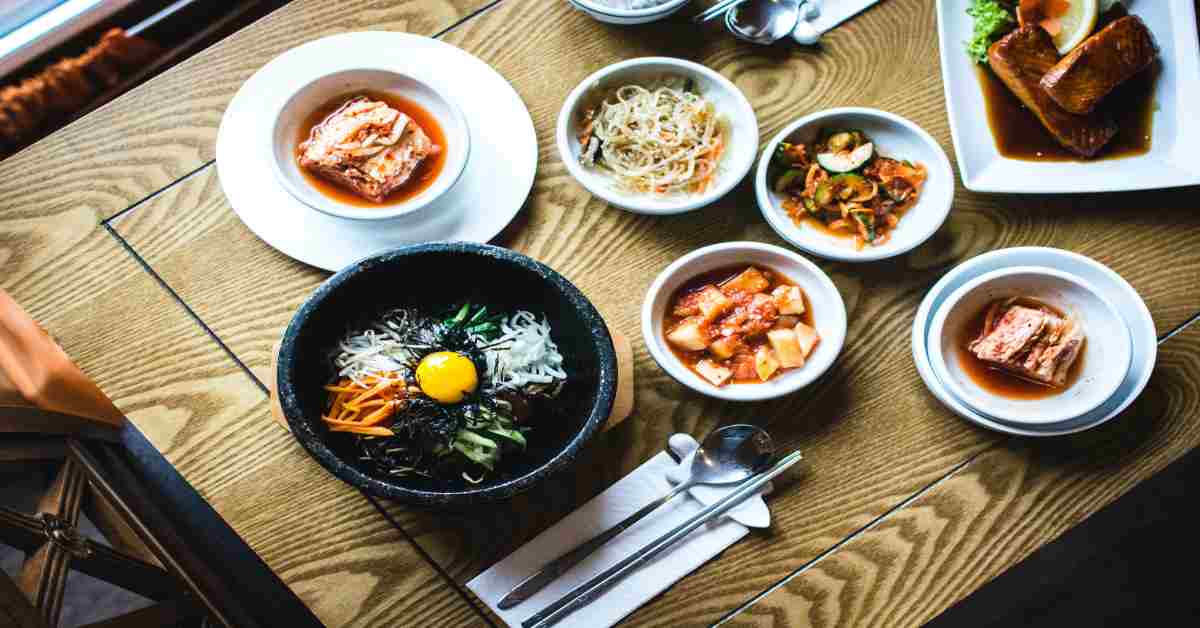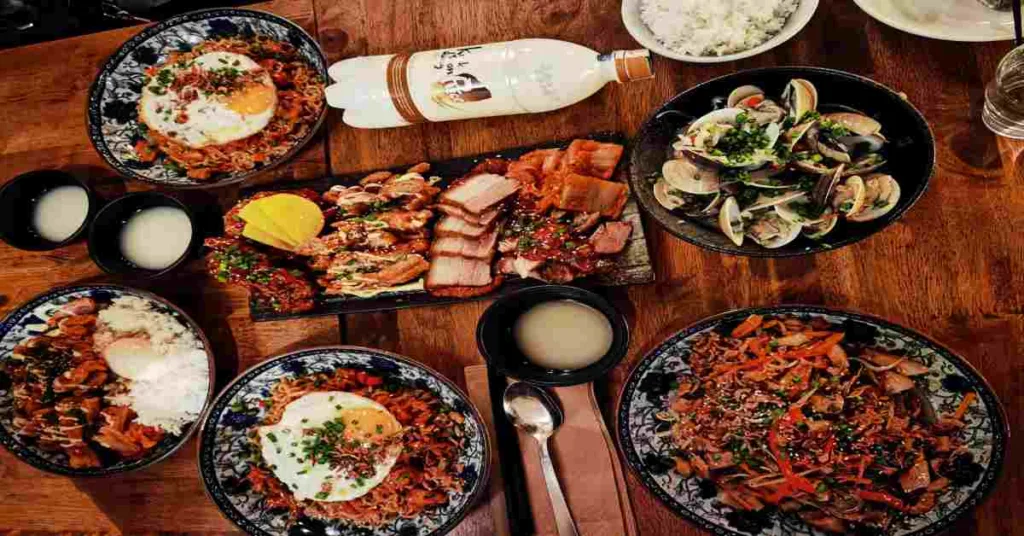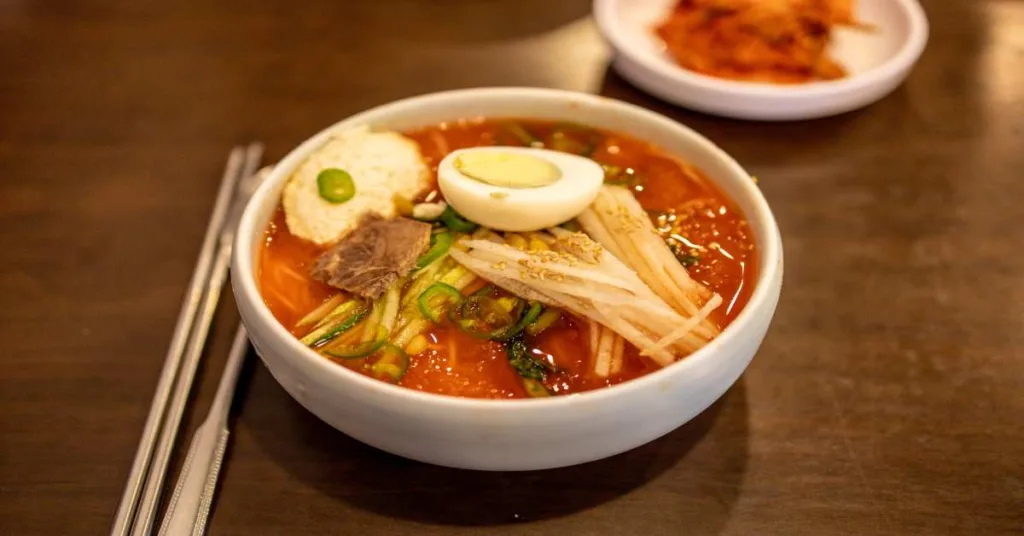Bibimbap is full of healthy dish that is easily available at eateries, food courts, and street markets, making it another must-try while you are in Seoul. Korean dish Bibimbap was originally designed as a royal food, but over time it rose to become the most popular Korean dish for a typical lunchtime meal. Korean food Bibimbap will leave you satisfied and comforted if you find solace in your food bowl.
Even if you’ve never visited Korea, Bibimbap is a dish that is uniquely Korean and has grown to be a family favourite.
Once you’ve had a dish, you won’t be able to stop eating it. Additionally, you may cook this clean, healthful Korean dish at home.
Content :
- What is Bibimbap?
- Benefits of homemade Bibimbap
- Bibimbap recipe
What is Bibimbap?
One of the most popular Korean dishes. The word “Bibimbap” is Korean for “mixed rice”; the word “bap” is Korean for “cooked rice.” An assortment of seasoned sautéed veggies, marinated meat (often beef), a fried egg, and sesame seeds are added to a rice bowl. For those who prefer seafood, there is a variation of this Korean mixed rice meal called Hoedeopbap that uses raw seafood instead of beef, like salmon, tuna, or octopus.
Regional variations can be detected in bibimbap’s ingredients. Bibimbap can be served as vegetarian or meat-based cuisine, depending on the region and ingredients utilised. This Korean meal is served with bibimbap, a sweet and sour sauce prepared with gochujang, a type of Korean chilly paste.
Every bite has a crisp texture and a rich flavour from each component.
Benefits of Bibimbap
A tasty bowl of wonderful and colourful food from Korea is called Bibimbap. It contains a lot of nutritious elements. Bibimbap is a very wholesome dish that mostly consists of protein blended with a range of nutrient-dense veggies and is completed with rice’s carbs. This makes it a very well-balanced, wholesome meal.
Meat: Rich in protein. Protein is a crucial early ingredient in developing muscle mass. Furthermore, protein can speed up metabolism, causing greater rates of calorie burning, which when coupled with exercise, can lead to weight loss.
Carrot: It is high in protein. It is great for the skin and can help to prevent sunburn, acne, wrinkles, pigmentation and uneven skin tone.
Sesame seeds: High in Calcium & magnesium. Magnesium possesses qualities that assist control blood pressure, regulating blood sugar levels (excellent for diabetics), preventing asthmatic airway spasms, and even helping lessen the risk of cancer. As we all know, calcium helps maintain healthy bones by promoting higher bone strength, density, and osteoporosis prevention.
Chilli flakes: Stimulates metabolism. Your metabolism can be accelerated with the help of capsaicin, the component of chillies that gives them their heat.
Broccoli: Good for the Heart.
Eggs: Full of vitamins(A,B12, B2,E).
Cucumber: Anti-inflammatory.
Garlic: Combat illness. It has some medicinal properties and is effective in the Common cold.
Bibimbap recipe
Ingredients:
Vegetables:
The most common vegetables are; Soyabean sprouts, Raddish, Carrots, Spinach, Zucchini, Mushrooms etc.
Meat:
Traditional marinated beef bulgogi is a common ingredient in bibimbap recipes.
Other alternative meat toppings can also be used for diverse flavours.
Chicken, pork, or spicy squid stir-fry are all excellent meat toppings for bulgogi.
Eggs
Rice
Gochujang(Korean chilli paste)
Garlic
Vinegar
Soy sauce
Sesame seeds
Sugar
Sesame oil
Recipe:
Step1: Cook vegetables
Soybean sprouts: Seasoned the sprouts with garlic, sesame seeds, sesame oil, green onions and soy sauce and then tossed well.
Raddish: Saute the thinly sliced radish at medium flame and toss well with sesame oil and salt.
Carrot: Stir fry the carrots for 30 seconds and toss with sesame seeds, sesame oil and salt.
Zucchini: Saute the zucchini for 30 seconds and add sesame oil and seeds to it.
Spinach: Stir-fry the spinach for 1 minute and add soy sauce, sesame seeds and oil in it.
Mushrooms: Saute the mushrooms for 1 minute and toss with sesame seeds, garlic and salt.
You can add more vegetables according to your choices.
Step2: Cook the meat
Cook the marinated meat over high flame for 5-6 minutes or until fully cooked.
Step3: Bibimbap sauce
Put gochujang(Korean chilli paste), sugar, vinegar, soy sauce, sesame seeds, sesame oil into a bowl and mix it well to prepare the sauce.
Step4: Assemble the Bibimbap
Traditionally, It is served in a sizable porcelain or stainless steel bowl. Dolsot Bibimbap is offered in a Korean stone pot that may be placed directly on the heat source, in contrast.
- Spread the necessary quantity of rice on the bottom of the serving bowl.
- For a pleasing visual presentation, arrange the vegetables on top of the rice in groups of contrasting hues.
- Put the beef ground for bulgogi meat in the centre.
- Add a sunny-side-up fried egg on top.
- The sauce (approximately 2 tablespoons) can be added directly to the rice bowl by drizzling it on top, or it can be placed in a small sauce bowl next to the bibimbap so that everyone can add it how much they like.
Read more about Korean food (follow the link below)


